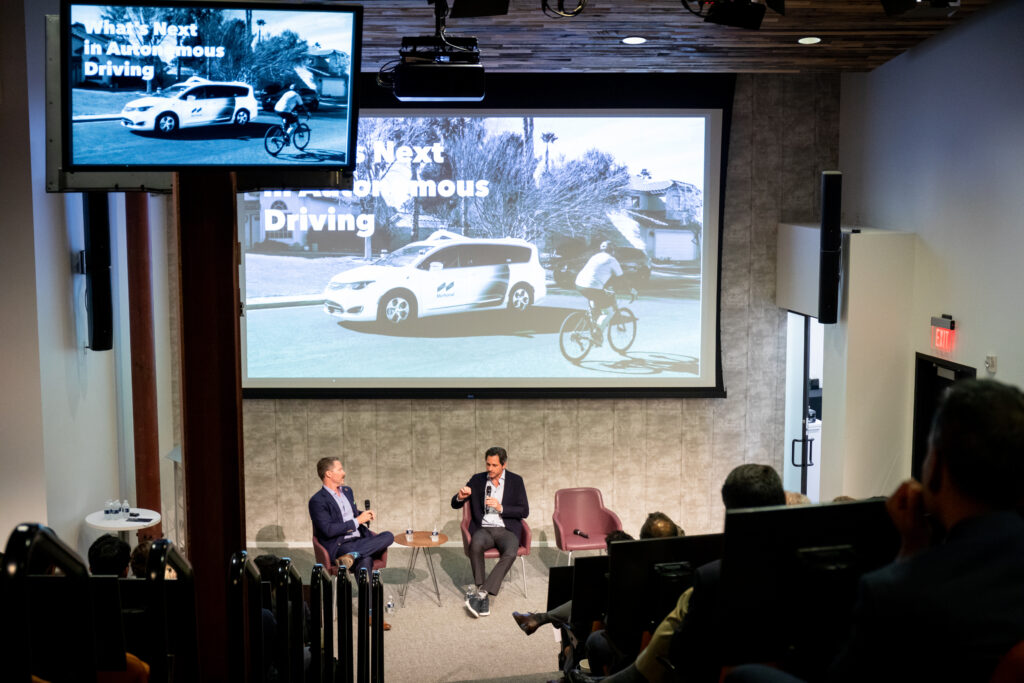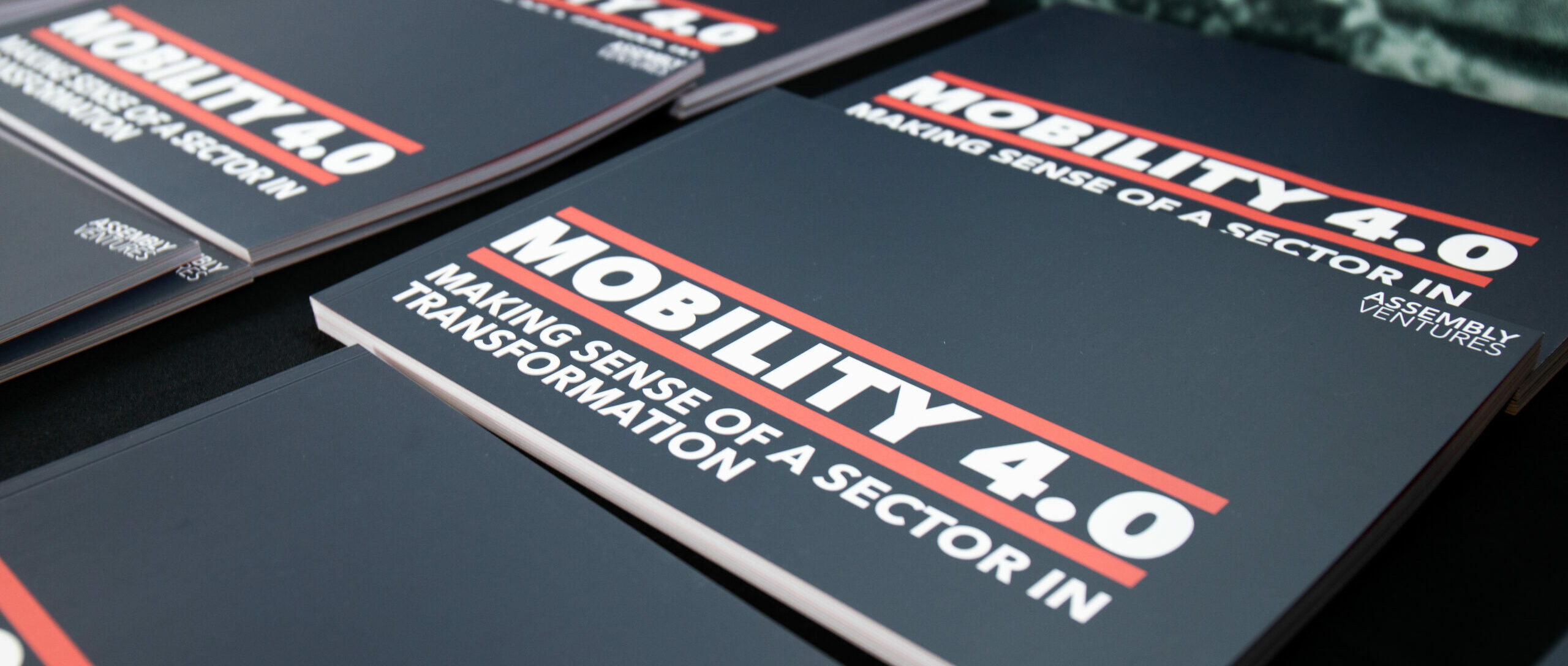Expert Insights on the U.S. Mobility Sector – Interview with Jessica Robinson
Publish Date: March 21st, 2023
 We were delighted to talk to Jessica Robinson, Co-Founder and Partner at Assembly Ventures, the “first transatlantic mobility fund in the world”, about the (future) trends in the US mobility sector.
We were delighted to talk to Jessica Robinson, Co-Founder and Partner at Assembly Ventures, the “first transatlantic mobility fund in the world”, about the (future) trends in the US mobility sector.
How did your passion for all topics mobility begin?
Looking back, I honestly think the die was cast when I was a young girl. My father used to bring my sister and I to go sit and look out over the long freight trains that passed through the mountains where I grew up. I loved imagining what was inside of those rail cars and where the trains were headed.
Professionally, I’ve been drawn to the industry dating back to my first role at Zipcar where I led a team responsible for growing our membership. The one-on-one conversations I had with people during that period crystallized for me how deeply our ability to move is linked to opportunity.
It became my personal mission to work to create a world where access to transportation enables people’s dreams.
What problems do you deal with on a daily basis and how do you and your team at Assembly Ventures try to solve them?
Most of our team members are operators at heart. That means we love to roll up our sleeves and tackle whatever it is that is the problem at hand. We do this working directly alongside our portfolio companies, particularly when it comes to business development.
Weekly if not daily, we all spend time reaching out to potential customers and partners to open doors for our companies. Our team’s footprint in Europe and North America has been an essential part of helping them figure out how and where to grow.
What is one area of focus that has shifted over the many years you have been in the mobility sector?
For many in this industry, particularly in places like Michigan and Germany that have a deep history of automotive manufacturing, companies historically have been focused on owning one piece of a value chain and delivering at an efficient, industrial scale. Mobility isn’t so simple and often requires business model innovation in parallel with the commercialization of new technology.
It requires the challenging work of figuring out where your company or technology fits within an ecosystem and addressing new stakeholders and competitors which were previously not on the map.
That could be new mobility service providers working with rather than in competition with transit agencies. It could also be a battery company partnering with a competitor to jointly establish demand for a domestic raw material. It’s a much more complex operating environment.

Assembly Venture Team (from left to right): Sujoy Sarkar (Director), Felix Scheuffelen (Co-Founder & Partner), Jessica Robinson (Co-Founder & Partner), Chris Thomas (Co-Founder & Partner)
How would you summarize the main current trends in the mobility sector in a few sentences?
Just a few years ago, the industry was very focused on a set of trends described in the acronym “CASE” – connectivity, autonomy, shared services, and electrification. Those are important but don’t tell the full story of what’s happening.
When we look at mobility, we think about technology and business model change across physical and digital infrastructure, systems which connect those digital and physical domains, and in applications and new customer interfaces. We’re seeing lots of exciting innovation both within and across these three layers.
What trend in the mobility sector are you most excited about?
I’m personally very interested right now in the opportunities for innovation within freight and logistics. There are so many inefficiencies across the spectrum that startups are working to solve. We’re seeing solutions ranging from digitalization of paper-based processes, demand forecasting, truck driver tools, and maritime optimization.
COVID highlighted for all of us just how essential the movement of goods is for our economies and for our daily lives. Now, with a new focus on reshoring of production to Europe and North America, I think we’ll see other priorities, like transparency, resilience, and even GHG footprint, emerge alongside speed.


Do you see the U.S. as a pioneer when it comes to the future of mobility?
This is an interesting question to try to answer. On the one hand, my immediate reaction is to say, “Of course. Yes, we are!” The harder question is to identify the specific areas where the U.S. has led and where we might continue to do so in the future. There are two aspects of the U.S. pioneering approach that come to mind in this discussion.
First, mindset. It’s cliché but also true that we have a different comfort with risk. When that’s overlaid on top of an industry like mobility where we have engineers and business leaders with deep, deep domain expertise, it’s inevitable that a cohort of entrepreneurs with careers inside corporate organizations will decide to take a leap and start their own companies.
The second area is the systems engineering behind autonomous driving. Even though this industry has seen some recent high-profile falters, the scale of the combined U.S. talent starting with universities through those working in startups and corporations is significant. This collective technical and professional experience sets the stage for better integrated and more thoughtfully designed transportation modes, services, and experiences.
How important is Foreign Direct Investment & Innovation from overseas for the mobility sector in your opinion?
Taking just automotive for a moment, 96 of the top 100 automotive suppliers to North America have a presence in Michigan. It’s a diverse and international group critical to our economy. A number of these companies have been early customers or partners to mobility startups. At our core, we believe this type of cross-border collaboration across the Western world is essential.
At the same time, there are real challenges to building true innovation alliances of any kind, but I’d argue particularly within mobility. Research on patent filings shows that the largest multinationals are often hesitant to fully engage because of fears of knowledge spillover. R&D centers often stay in the home country.
When foreign investments are made, plans to also work alongside local universities and within the local startup ecosystems could further accelerate technology advancement and workforce development.

Is there anything in particular that companies and startups from Berlin should keep in mind when looking at the U.S. mobility sector?
I asked my colleagues about this question and thought their observations were very insightful. We’ve both seen German startups with only European investors try to enter the U.S. market with a heavy operations-focused approach assuming that will be enough to win investment and customer traction.
In reality, a thoughtful and very strategic setup is essential. You need to think through the right U.S. investors and have strategic partnerships in place with contracts set before making the leap.
Marketing and sales matter much more here in the U.S. HERE Technologies is actually an interesting spinout case study of a group of automotive companies (Audi, BMW, and Mercedes-Benz) identifying an innovation opportunity, creating a joint venture in partnership with Intel, and having success in the U.S. market.
Finally, what are the biggest obstacles that need to be overcome now to pave the way for the trends you have described?
I’d love to see corporations within the mobility sector continue to create programs, strategies, and investment approaches which let them quickly and systematically engage with startups.
The potential for partnerships is practically limitless but often gets bogged down in procurement processes or internal politics. I’ve been on the other side of the table and know how much is involved trying to move a new program forward, but a lot of energy ends up being wasted for everyone involved.